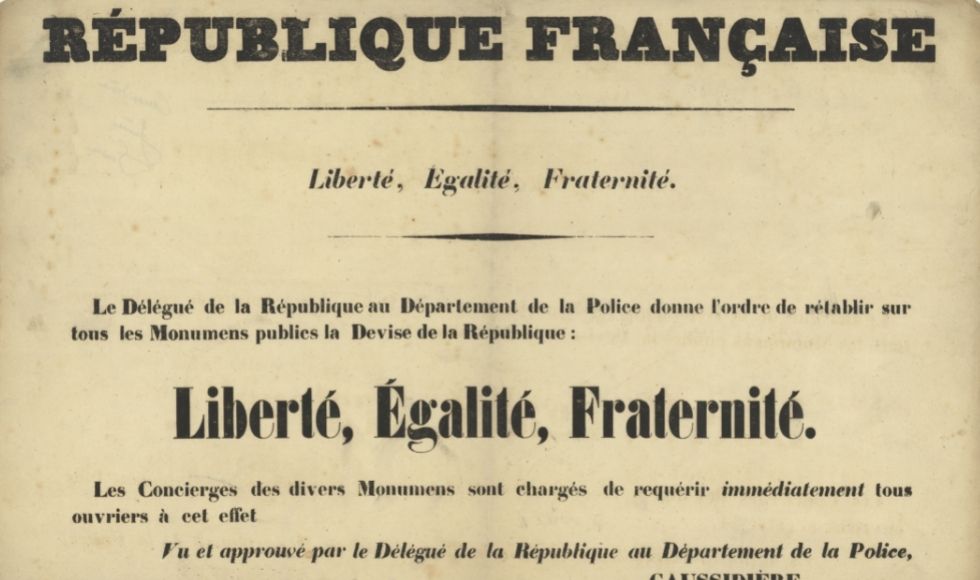Sherman Centre launches McMaster-tailored digital curation platform

A group of McMaster history students used Omeka S to create a digital display of posters from the French Revolution of 1848.
The McMaster community now has access to a free, tailored version of a web publishing platform called Omeka S, thanks to a partnership between the Lewis & Ruth Sherman Centre for Digital Scholarship and the William Ready Division of Archives and Research Collections at McMaster University Library.
Omeka S is an open-source tool used by universities, libraries, archives, galleries and museums. It allows users to create digital exhibits that share a collaboratively built pool of items and their metadata.
After a collaborative development process involving archivists, librarians, developers and experts on digital scholarly infrastructure, the Sherman Centre is now hosting a version of Omeka S for use by the McMaster community at no cost.
Among the advantages are expanded options for classifying items, a McMaster-branded template, support and detailed instructions from Sherman Centre staff.
“I’ve been using Omeka S for many years in my teaching, and it is a great tool to showcase primary source archival items in a curated exhibit format,” said Amanda Montague, postdoctoral fellow with the Sherman Centre.
“We wanted to host our own version of Omeka S at McMaster to support multiple uses, from classroom projects with digital exhibits created by students, to graduate student researchers or faculty researchers who are interested in sharing their work through multimodal or more public forms of dissemination.”
Myron Groover, archives and rare books librarian at the William Ready Division of Archives and Research Collections at the library, is a self-proclaimed fan of Omeka S for its digital exhibit-making capabilities, both at the library and in the classroom.
Groover recently had a chance to give the tool a test run with a group of McMaster history students who created a public-facing digital display of posters from the French Revolution of 1848 as part of a practicum placement.
“At first, I thought the tool was a good way to take my own exhibits online. But as we worked through its capability, we realized that digital curation is something that is really interesting to students and faculty who are looking for ways to present visually compelling projects and research to the public,” he said.
“The McMaster history students were able to put together an engaging exhibit in Omeka S with very little coaching, which showed me it was possible to do this without a huge amount of support.”
Montague said Omeka S is a tool that has endless possibilities for students, faculty, and staff across McMaster.
“This is not just putting pictures on a website, but rather curating a digital exhibit of items and classifying them with the proper metadata,” she said. “If you think about walking through a museum, library, or art gallery, and encountering an exhibit display case of items, Omeka S offers a digitized version of that. It allows for storytelling and interactivity with primary-source documents in a digital context and that’s really unique.”
The Sherman Centre is hosting an Omeka S virtual launch event on Thursday, Nov. 25 at 1 p.m. The event will include a demo and discussion from McMaster community members who will speak about initial experiences working with the platform. All faculty, students and staff are welcome. Learn more and register on the Sherman Centre website.
Learn more at the Sherman Centre’s related webpage, or by emailing the Sherman Centre.


